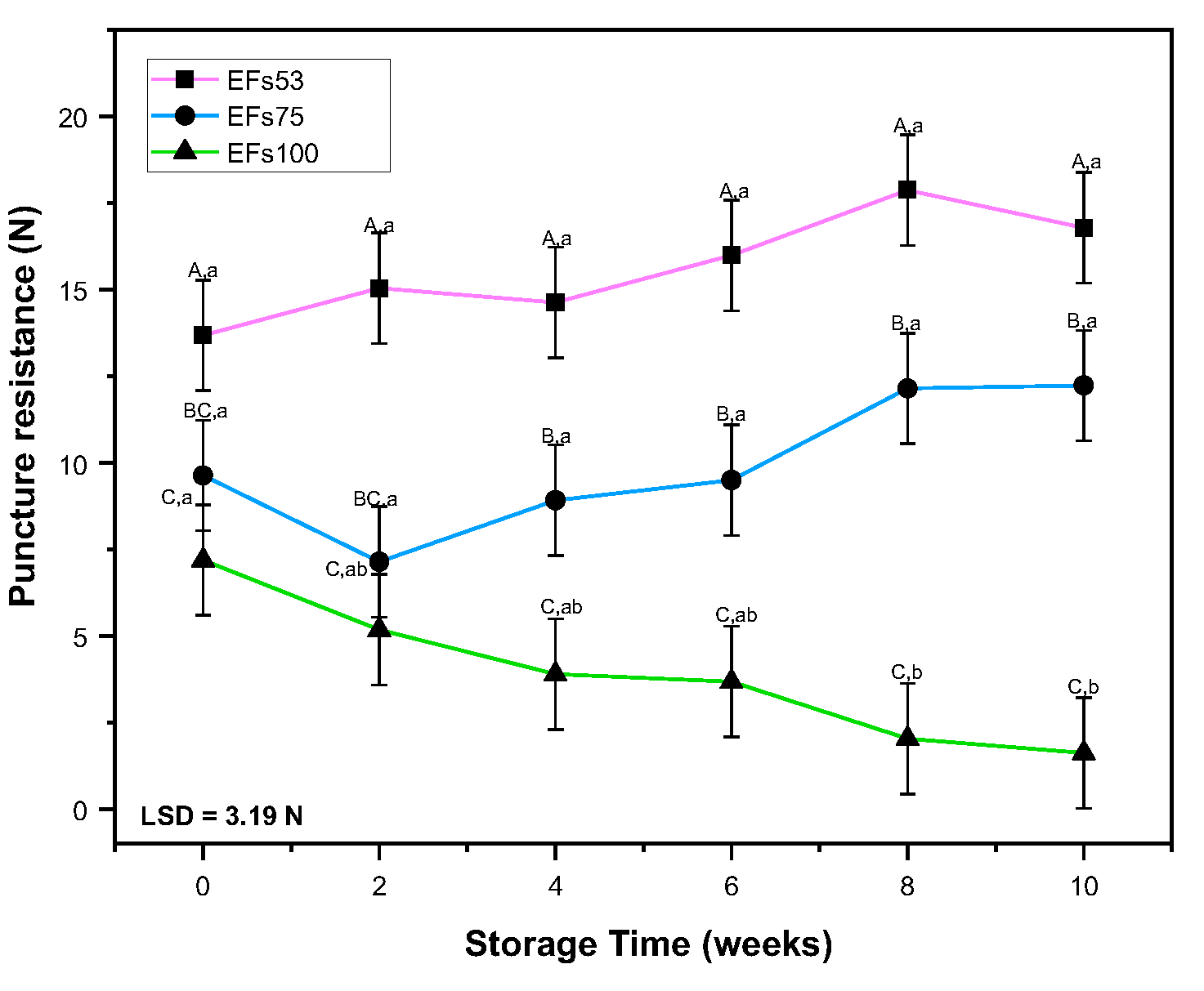 |
|
Starch is one of the most used polysaccharides in the formulation of Edible Films (EFs). This work aimed to develop starch-based EFs employing extrusion technology as a pre-treatment to casting technique and evaluate the storage relative humidity (RH) effect to determine their possible application as food coating. Corn starch and a mixture of plasticizers (sorbitol and glycerol) were processed in a twin-screw extruder. The casting technique was used for EFs formation. The EFs were conditioned at different storage RH (53, 75, and 100%) for ten weeks. The studied response variables were: puncture resistance (PR), puncture deformation (PD), water vapor permeability (WVP), water solubility (WS), X-ray diffraction patterns, and relative crystallinity. EFs at 53 and 75% RH showed the most stable behavior in PR and PD. Concerning the barrier properties, it was found that EFs stored at 53% RH had the lowest value of WVP and XRD patterns showing that storage time produces crystalline zones by the aging effect. Starch-based EFs obtained by the combination of extrusion-casting and stored at an RH of 53 and 75% presented the best physicochemical properties. Hence, these EFs could be used as coatings of intermediate moisture foods.
Keywords: corn starch, edible films, extrusion technology-casting technique, storage relative humidity, physicochemical properties.
|
|
 |

